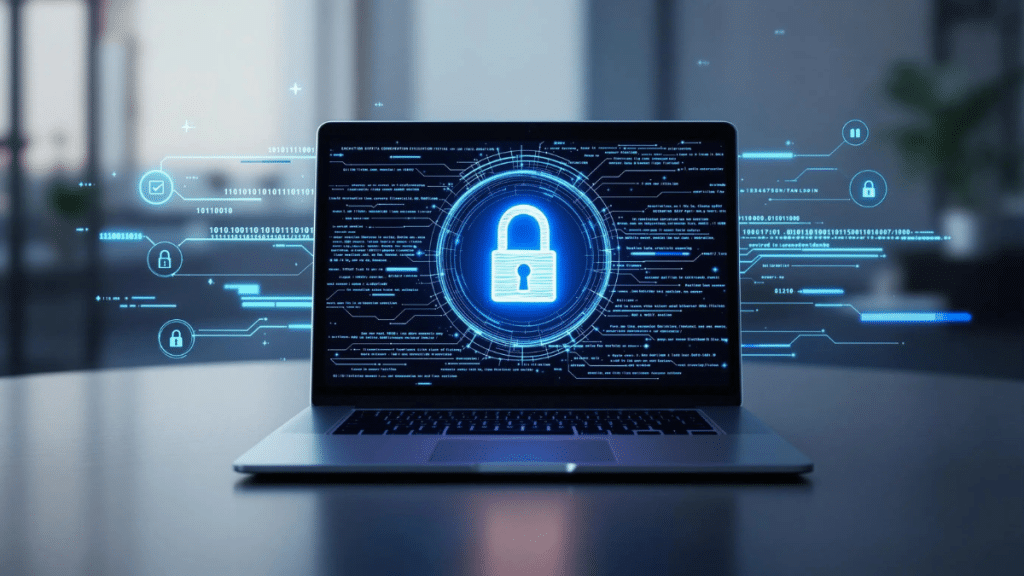Introduction
In today’s digital landscape, businesses rely heavily on seamless communication and secure data exchanges. As we enter 2025, the importance of secure data transmission has become more critical than ever. Cyber threats, data breaches, and evolving compliance regulations necessitate robust security measures to ensure business continuity. Organizations that implement advanced security protocols for data transfer can significantly enhance their business connectivity and operational efficiency.
The ability to transmit data securely across networks not only protects sensitive business information but also improves communication systems, including business voice services. This article explores how secure data transmission plays a pivotal role in business connectivity and the best practices for ensuring a safe and efficient data exchange.
Understanding Secure Data Transmission
Secure data transmission refers to the process of sending and receiving data over a network while ensuring that it remains protected from unauthorized access, interception, or manipulation. Whether transmitting data over the internet, private networks, or cloud-based systems, businesses must implement strong security measures to prevent breaches.
Key Components of Secure Data Transmission
- Encryption: Encrypting data ensures that even if it is intercepted, it remains unreadable without a decryption key.
- VPNs (Virtual Private Networks): VPNs create secure tunnels for data transmission, reducing the risk of cyberattacks.
- Firewalls and Intrusion Detection Systems: These security tools help monitor and filter traffic, blocking suspicious activities.
- Multi-Factor Authentication (MFA): Adding an extra layer of authentication prevents unauthorized access to transmitted data.
- Zero Trust Architecture: A security model that requires verification for every user and device before granting access.
The Role of Secure Data Transmission in Business Connectivity
1. Enhancing Remote Work Capabilities
The rise of remote and hybrid work models has made secure data transmission a top priority for businesses. Employees access corporate networks from various locations, increasing the risk of data breaches. By using encrypted channels and secure transmission methods, organizations ensure that remote teams stay connected without compromising security.
2. Improving Business Voice Services
Secure data transmission is crucial for business voice services, including VoIP (Voice over Internet Protocol) and cloud-based communication platforms. Unsecured voice services can be susceptible to eavesdropping, call interceptions, and service disruptions. Implementing encrypted voice transmission ensures:
- Confidentiality: Conversations remain private and protected from unauthorized access.
- Call Quality & Reliability: Secure transmission reduces interference and packet loss, ensuring clear communication.
- Compliance: Industries like healthcare and finance require secure voice communications to meet regulatory standards.
3. Protecting Customer and Business Data
Companies transmit large volumes of sensitive data, including customer details, financial records, and proprietary business information. Secure data transmission safeguards:
- Customer Trust: Consumers are more likely to engage with businesses that prioritize data security.
- Regulatory Compliance: Industries must comply with GDPR, HIPAA, and other data protection laws.
- Intellectual Property: Protecting trade secrets and business strategies from cybercriminals.
4. Ensuring Business Continuity and Disaster Recovery
In the event of cyberattacks, natural disasters, or system failures, businesses rely on secure data transmission to maintain operations. Secure backup and recovery solutions ensure:
- Minimal Downtime: Encrypted backups enable quick restoration of business data.
- Secure Cloud Storage: Transmitting data to secure cloud environments protects against hardware failures.
- Resilient Infrastructure: Businesses can operate smoothly despite cyber threats.
5. Optimizing Network Performance and Speed
Secure data transmission does not just protect data—it also improves overall network performance. By preventing cyberattacks, malware infections, and unauthorized access, businesses experience:
- Faster Data Transfers: Encrypted, optimized connections allow efficient data movement.
- Lower Latency: Reducing congestion and security vulnerabilities ensures better performance for business applications.
- Better VoIP and Cloud Service Performance: Secure networks prevent disruptions in business communication services.
Best Practices for Secure Data Transmission in 2025
To maximize security and business connectivity, organizations must implement best practices for secure data transmission:
1. Implement Strong Encryption Standards
Businesses should use AES-256 encryption to protect sensitive data during transmission. End-to-end encryption (E2EE) ensures that only authorized parties can access the transmitted data.
2. Use Secure Communication Protocols
- TLS (Transport Layer Security): Protects web-based communication and transactions.
- IPSec (Internet Protocol Security): Provides encrypted tunnels for secure network communication.
- SIP over TLS for VoIP: Enhances the security of business voice services.
3. Adopt Multi-Layered Security Measures
A combination of security layers helps prevent cyber threats, including:
- Firewalls: Block unauthorized traffic.
- Anti-Malware Software: Protects against malicious attacks.
- Zero Trust Security: Limits access to only verified users and devices.
4. Monitor and Audit Network Traffic
Businesses should regularly monitor network activity to detect potential security breaches. Implementing AI-driven threat detection systems helps identify suspicious behaviors before they cause damage.
5. Regularly Update Software and Security Patches
Cyber attackers exploit outdated software vulnerabilities. Businesses should:
- Apply security patches immediately.
- Update firmware for routers and network devices.
- Upgrade outdated communication platforms.
6. Educate Employees on Cybersecurity Best Practices
Human error is one of the leading causes of security breaches. Businesses should:
- Train employees on phishing attack prevention.
- Implement strict password policies.
- Enforce secure file-sharing protocols.
7. Leverage Managed Network Solutions
Partnering with a managed network services provider ensures expert security management. These providers offer:
- 24/7 network monitoring
- Automated threat detection
- Incident response planning
The Future of Secure Data Transmission
As technology advances, businesses must prepare for emerging trends in secure data transmission:
- 5G Security Enhancements: Faster, more secure data transmission for IoT and cloud applications.
- AI-Powered Cybersecurity: Machine learning-driven threat detection.
- Blockchain for Data Integrity: Securing transactions and communications through decentralized encryption.
- Quantum Encryption: A future-proof security measure against cyber threats.
Conclusion
In 2025, secure data transmission is essential for business connectivity, ensuring smooth operations, protecting sensitive data, and enhancing business voice services. Companies that implement strong encryption, secure protocols, and multi-layered security measures can mitigate cyber threats and improve network performance.
By investing in secure transmission technologies, businesses can optimize their communication, build customer trust, and ensure long-term success in an increasingly digital world.
